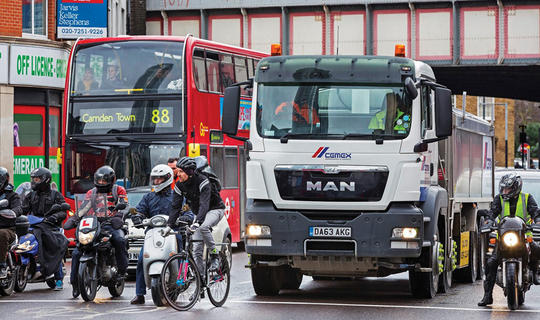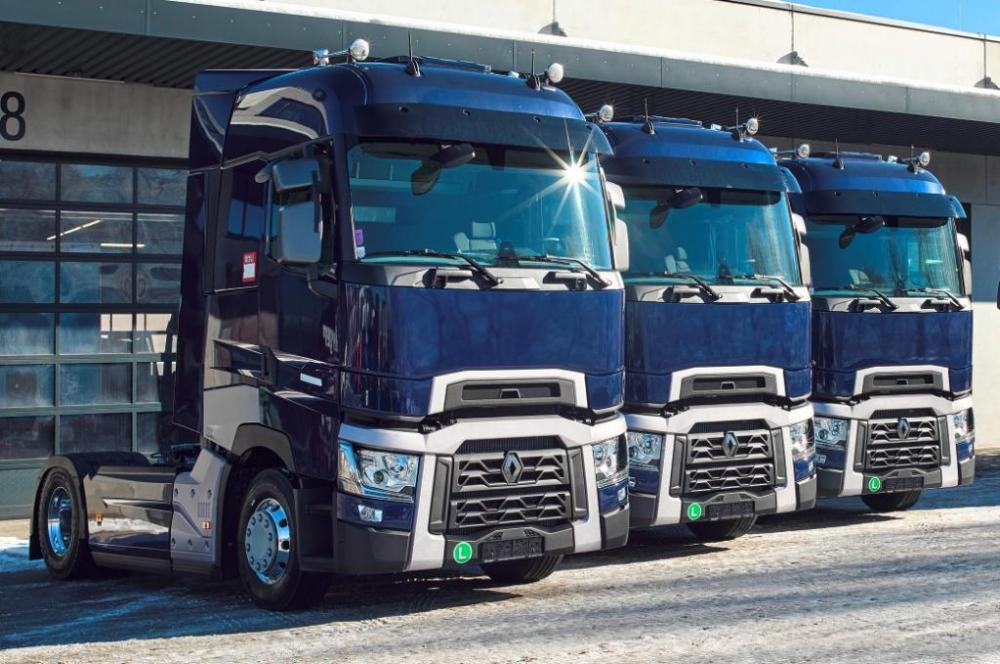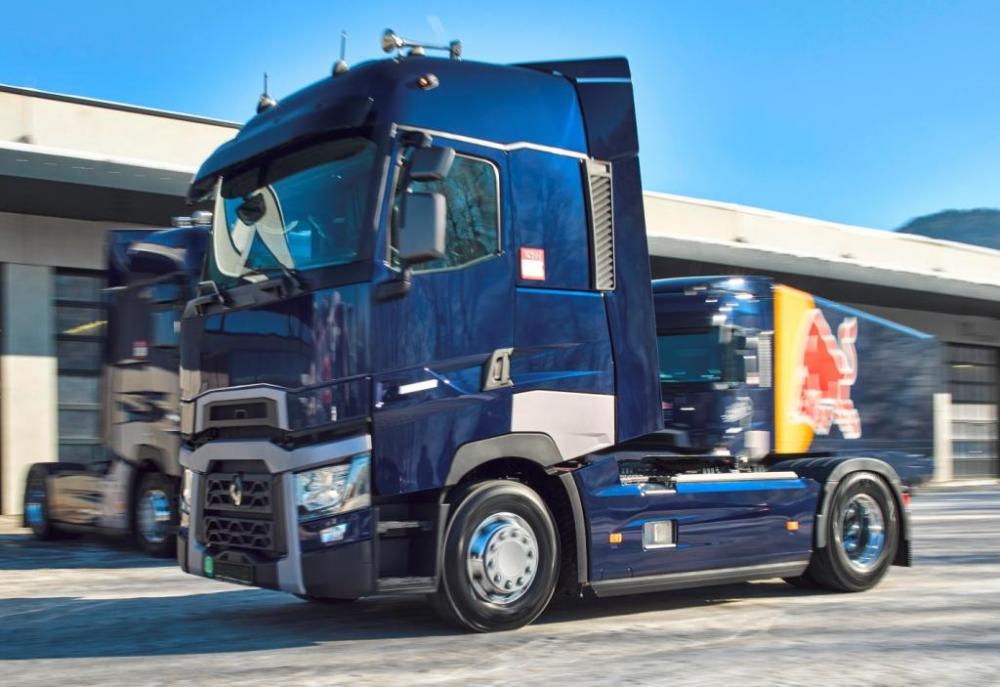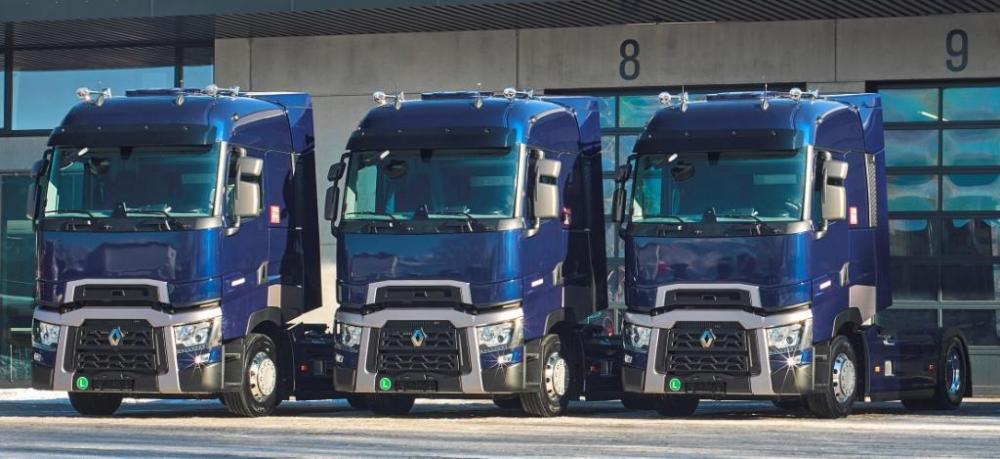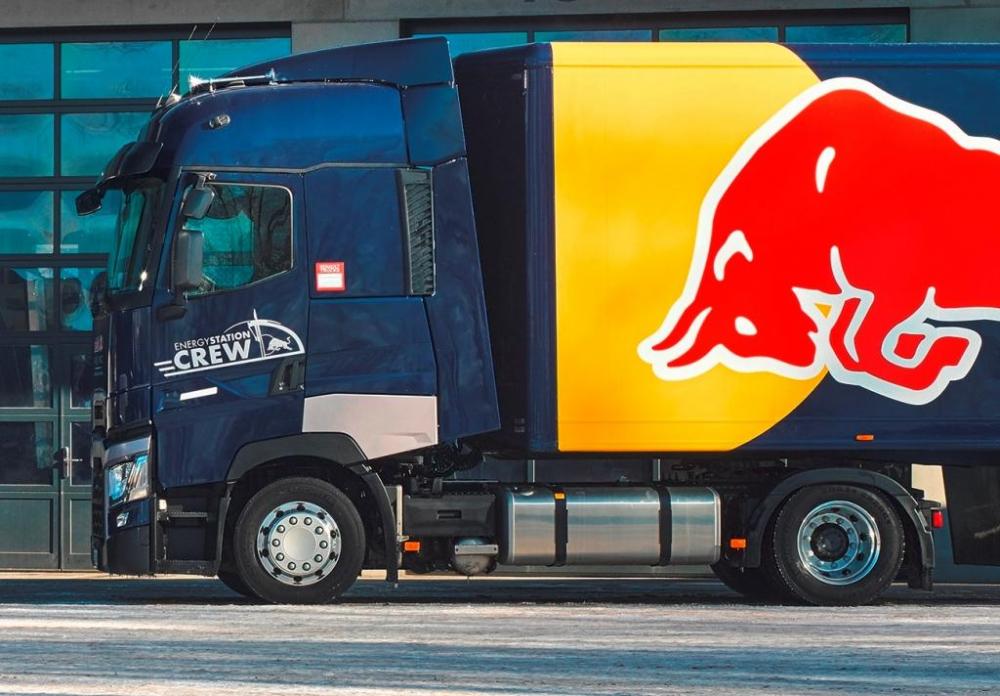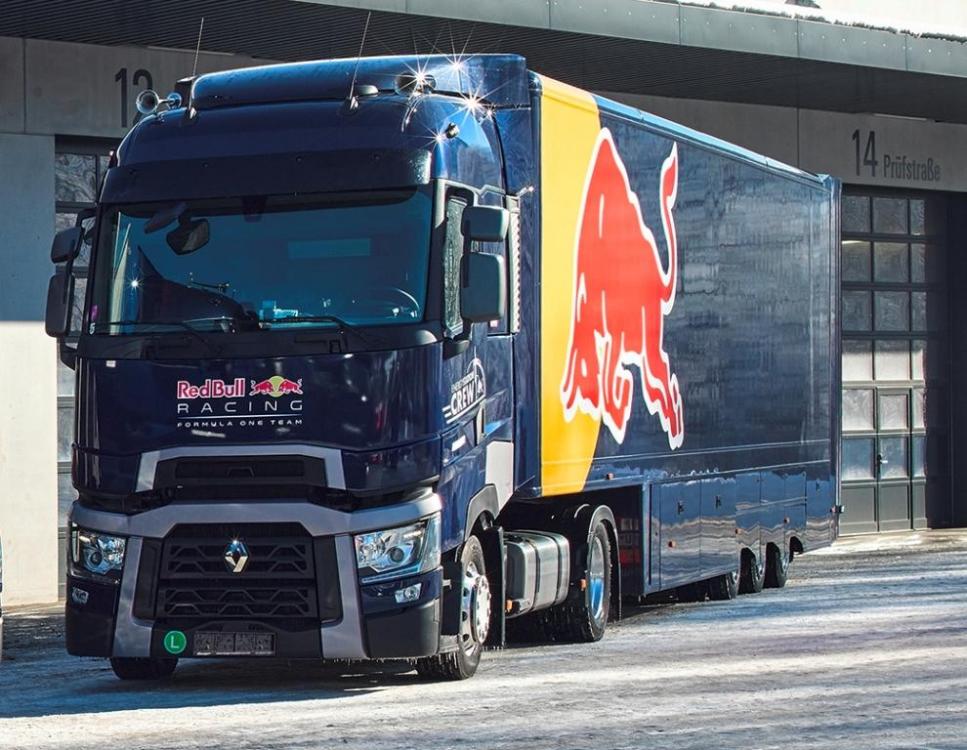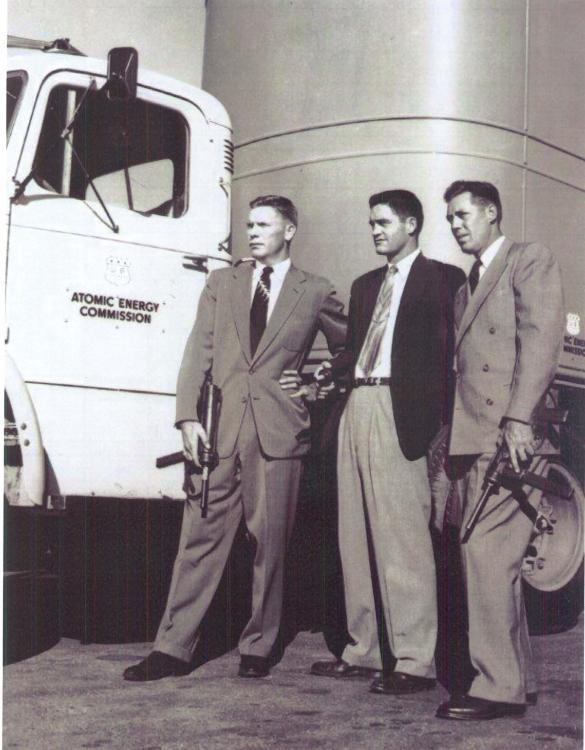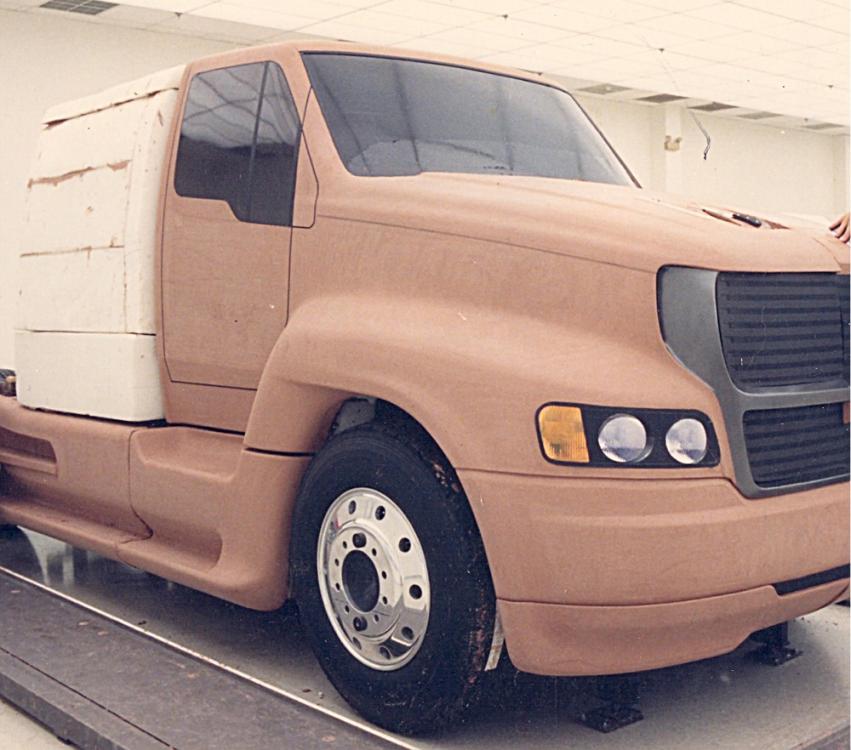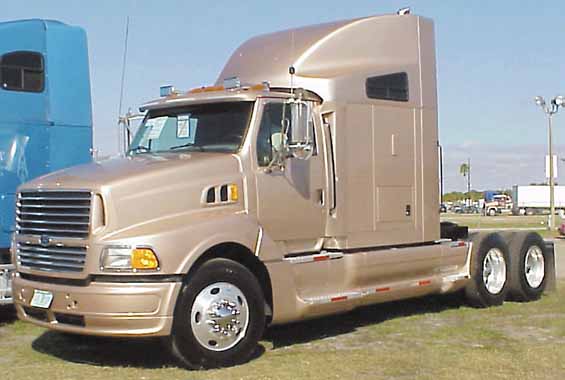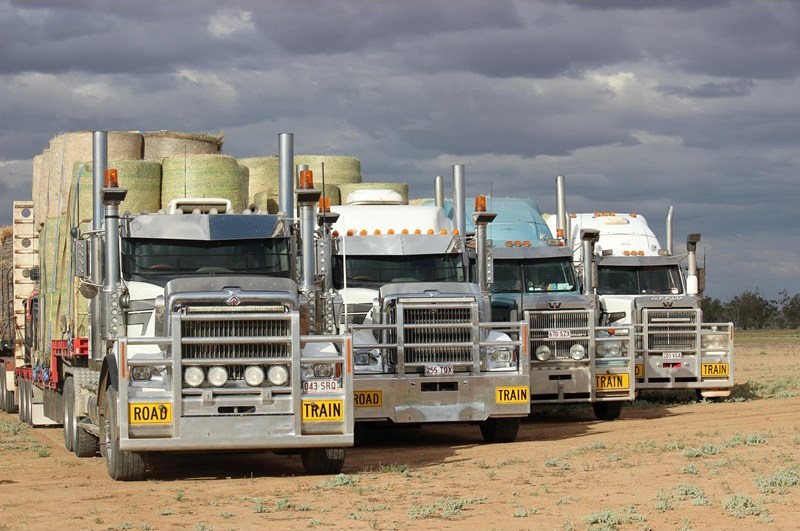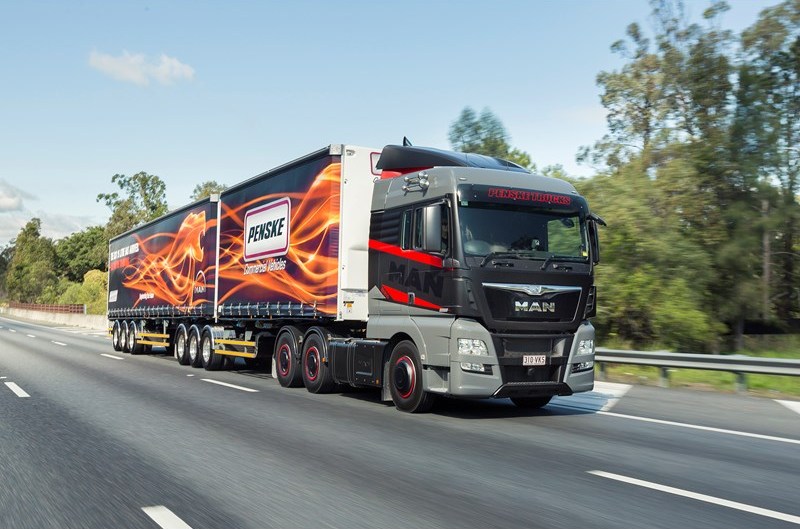
kscarbel2
Moderator-
Posts
18,895 -
Joined
-
Days Won
114
Content Type
Profiles
Forums
Gallery
Events
Blogs
BMT Wiki
Collections
Store
Everything posted by kscarbel2
-
Fleet Owner / March 22, 2017 Agency also cancels previously-announced plans to issue a supplemental notice of proposed rulemaking in support of its proposed motor carrier safety methodology, which is now scrapping. The Federal Motor Carrier Safety Administration (FMCSA) today announced in the federal register that it is withdrawing its controversial safety fitness determination (SFD) rulemaking issued in January 2016 and will also cancel plans to issue a supplemental notice of proposed rulemaking (SNPRM) announced back in January to help support the SFD effort. “The new methodology would have determined when a motor carrier is not fit to operate commercial motor vehicles (CMVs) in or affecting interstate commerce based on: the carrier’s on-road safety data; an investigation; or a combination of on-road safety data and investigation information,” the agency noted in its filing, which is on “public display” until being officially entered in the record tomorrow. Yet FMCSA said “after reviewing the record in this matter” it decided to withdraw both the NPRM and SNPRM regarding the SFD rule, adding that “additional analysis” will need to be completed before determining whether further rulemaking efforts are necessary to revise the SFD process in the future. Back in February, over 30 national transportation groups and 30-plus state and regional associations sent a joint letter to Transportation Secretary Elaine Chao calling for the FMCSA’s SFD rulemaking to be dumped as it was based on what they characterized as “flawed” data taken from the agency’s Compliance Safety and Accountability (CSA) program and Safety Measurement System (SMS). “We do not believe it makes sense to build a new safety fitness determination system upon a flawed system [that] is currently undergoing congressionally-mandated review and reform and is likely to change,” the groups said in their letter. “While we support the goal of an easily understandable [and] rational safety fitness determination system, this proposal is built on a flawed foundation,” they stated. The American Trucking Associations (ATA) found the use of a singular “unfit” rating within the proposed revamp of SFD methodology particularly troubling. “This flaw in the system is troubling. The term ‘unfit’ is applied to fleets that, comparatively speaking, are considered the least safe in the industry,” ATA wrote. “Yet FMCSA lacks sufficient data on 4/5ths of the industry to make such a determination.” Similarly, the Truckload Carriers Association (TCA) emphasized the importance of safety determinations, and that “it is imperative that the judgment of rendering a carrier as ‘unfit’ be based upon the most accurate information available to the agency.” However, “the very fact that this rule would only determine the safety fitness of approximately 75,000 carriers is incomprehensible and discriminant to say the very least,” the group said. As a result of this shortfall, TCA noted it could not support a rule that creates an environment that is not equal to all involved and in many cases, allowing a competitive advantage of one carrier versus another.
-
Daimler picks U.S. trucks chief Daum to replace Bernhard
kscarbel2 replied to kscarbel2's topic in Trucking News
Nielsen tapped to replace Daum at DTNA Fleet Owner / March 22, 2017 Longtime company veteran has served as DTNA’s chief operating officer since 2001. Roger Nielsen will be taking the reins at Daimler Trucks North America (DTNA) as president and CEO effective April 1 this year, replacing Martin Daum who moved up to become a member of the board of management and head of Daimler Trucks and Buses at DTNA’s parent company, Germany’s Daimler AG, back on March 1. Nielsen, 56, will also oversee DTNA’s affiliated companies, which includes Freightliner Trucks, Western Star Trucks, Thomas Built Buses, Freightliner Custom Chassis Corp. (FCCC) and Detroit Diesel Corp. “Roger Nielsen brings a rock solid product, manufacturing and sales background to this position paired with a razor-sharp focus on technology, quality and customer service,” Daum said in a statement. “He has an excellent track record as an influential leader in the industry.” Nielsen joined DTNA – then named Freightliner Corp. – back in 1986 as an industrial engineer and since then has held various positions for the company both in the U.S. and abroad at Daimler’s commercial vehicles divisions in Germany. For the last 16 years, he’s served as DTNA’s chief operating officer. -
Daimler picks U.S. trucks chief Daum to replace Bernhard
kscarbel2 replied to kscarbel2's topic in Trucking News
Daimler Trucks North America Names New President and CEO Heavy Duty Trucking / March 22, 2017 Roger Nielsen has been named president and chief executive officer of Daimler Trucks North America and its affiliated companies, Freightliner, Western Star, Thomas Built Buses, and Freightliner Customer Chassis Corporation. The appointment is effective as of April 1 and he will succeed Martin Daum who recently became a member of the board of management of Daimler AG, responsible for Daimler Trucks and Buses. “Roger Nielsen brings a rock solid product, manufacturing and sales background to this position paired with a razor-sharp focus on technology, quality and customer service. He has an excellent track record as an influential leader in the industry,” said Daum. “Having worked closely with Roger for so many years, I am certain that DTNA, its people and all its brands are in the best hands.” Nielsen has been the chief operating officer since 2001, responsible for the DTNA manufacturing network and all levels of operations in quality, supplier management, logistics, and custom application engineering. He has overseen Thomas Built Buses, Freightliner Custom Chassis Corporation, and DTNA’s continuous improvement programs. Nielsen joined DTNA as an industrial engineer in 1986 and held various positions at DTNA in the US as well as at Daimler’s Commercial Vehicles Divisions in Germany. “I am honored and proud to head up this great organization that I have been part of for over 30 years,” said Nielsen. “I look forward to building on the outstanding success achieved by the DTNA team under Martin’s leadership. Together, we will continue our dedication to delivering the best products and services to our North American customers.” . -
-
Ex-pharmacy exec convicted in deadly meningitis outbreak Associated Press / March 22, 2017 The former head of a Massachusetts pharmacy was acquitted Wednesday of murder allegations but convicted of racketeering and other crimes in a meningitis outbreak that was traced to fungus-contaminated drugs and killed 64 people across the country. Prosecutors said Barry Cadden, 50, ran the business in an "extraordinarily dangerous" way by disregarding unsanitary conditions to boost production and make more money. Cadden, president and co-founder of the now-closed New England Compounding Center (NECC), was charged with 25 counts of second-degree murder, conspiracy and other offenses under federal racketeering law. After five days of deliberations, the jury refused to hold Cadden responsible for the deaths and cleared him on the murder counts. He was found guilty of racketeering, conspiracy and fraud and could get a long prison term at sentencing June 21. The 2012 outbreak of fungal meningitis and other infections in 20 states was traced by the Centers for Disease Control and Prevention (CDC) to contaminated injections of medical steroids, given mostly to people with back pain. In addition to those who died, 700 people fell ill. Indiana, Michigan and Tennessee were hit hardest. Joan Peay, 76, of Nashville, Tennessee, suffered two bouts of meningitis after receiving a shot for back pain. She wept upon learning the verdict. "He killed people and he's getting away with murder. I am furious," she said. She said that she got so sick from meningitis "I didn't care if I died," and that she still suffers from hearing loss, memory problems, a stiff neck and low energy. Alfred Rye, 77, of Maybee, Michigan, said: "I wish I could give him the same shot he gave me. I think they should pay for their crime." Rye fell ill after getting an injection in his lower back 4½ years ago. He said he continues to suffer from a loss of balance and other ill effects. "Life has been totally hell," he said. The racketeering charge and the 52 counts of fraud carry up to 20 years in prison each, but federal sentencing guidelines typically call for far less than the maximum. Companies charged with selling contaminated drugs often reach settlements with the federal government and agree to pay large fines. The case against the New England Compounding Center stands apart because of the large number of deaths and serious illnesses and because of evidence that Cadden was aware of the unsanitary conditions, said Eric Christofferson, a former federal prosecutor in Boston. The scandal threw a spotlight on compounding pharmacies, which differ from ordinary drugstores in that they custom-mix medications and supply them directly to hospitals and doctors. In 2013, in reaction to the outbreak, Congress increased federal oversight of such pharmacies. Federal prosecutor Amanda Strachan told the jury during the two-month trial that the deaths and illnesses happened because Cadden "decided to put profits before patients." NECC used expired ingredients and falsified logs to make it look as if the so-called clean rooms had been disinfected, prosecutors said. After the outbreak, regulators found multiple potential sources of contamination, including standing water and mold and bacteria in the air and on workers' gloved fingertips. Cadden's lawyer, Bruce Singal, told the jury Cadden was not responsible for the deaths and pointed the finger at Glenn Chin, a supervisory pharmacist who ran the clean rooms where drugs were made. Chin has pleaded not guilty and is awaiting trial. NECC filed for bankruptcy after getting hit with hundreds of lawsuits. NECC and several related companies reached a $200 million settlement with victims and their families. The son of Kentucky Judge Eddie C. Lovelace, who died after receiving injections to treat neck and back pain, said the outcome had shaken his family's faith in the medical and legal systems. "Dad always ensured that the defendants were treated justly and fairly. He did that in life, and in death, I feel like he wasn't afforded either justice or fairness," Chris Lovelace said. "As of today, criminally no one has been held responsible or held accountable for my father's death," he added. "The only mistake, if you want to call it a mistake, that my father made was he sought out relief from back pain from the medical profession and the consequence of that decision for him was death." .
-
Tillerson was ‘stunned’ to be offered US secretary of state job The Financial Times / March 22, 2017 Rex Tillerson says he did not seek to be US secretary of state but was persuaded to take the job by his wife, who told him “God’s not through with you”. “I was supposed to retire in March, this month. I was going to go to the ranch to be with my grandkids,” the 64-year-old former oil executive told the Independent Journal Review in his first full-length interview since taking office. The man charged with framing US foreign policy for the next four years said he had never met Donald Trump before the then president-elect invited him to New York for a conversation “about the world”. “When he asked me at the end of that conversation to be secretary of state, I was stunned,” he told the IJR. Tillerson said when he got home his wife shook her finger in his face and told him: “God’s not through with you.” “My wife convinced me. She was right. I’m supposed to do this.” The admission in the IJR, a little known media operation founded by a former Republican party official, comes as Tillerson prepares to host a big international counter-terrorism conference in Washington on Wednesday. In the interview, conducted behind his desk in the back cabin of the state department’s Boeing 737 on the way back from Beijing, Tillerson gave few hard details on how his approach to foreign policy would differ from that of the Obama administration. But he strongly defended Mr Trump’s mantra of putting “America First”. “In Bonn, it came up in every discussion I had,” Tillerson said, referring to a series of meetings he had with foreign ministers at a G20 summit last month. He also argued it was the Obama administration’s foreign policy that represented a “dramatic shift” and what he was working on was more consistent with US diplomacy of previous decades. He said the Trump approach was about “simply bringing back to a point where you can believe once and for all that you can win”. But Tillerson also warned: “Every administration knows it only has so much time.” Trump has attacked the cautious approach of the Obama administration in tackling Islamic fundamentalist terrorism. Tillerson signalled the administration would take a more activist stance in the Middle East. “We can’t get to deconflicting the rest of the region with Isis in the way,” he said. Tillerson was critical of the Obama administration’s strategy against ISIS, pointing out the original term they had used was “degrade”. “All that did was drag out the agony for everyone,” he said. Tillerson has been criticized in the US for his low profile since taking office. Detractors say he was left out of the loop of several critical foreign policy decisions made in the administration’s early days, including the travel ban for refugees and visitors from a list of Muslim-majority countries. “I would hope that people can maintain their patience in these early days and recognize I’ve only been at it six weeks,” he said. Critics also note he has not gone out of his way to woo the influential Washington press corps, as previous secretaries have done. But Tillerson indicated the administration was working on achieving results. “I’m not a big media press access person. I personally don’t need it. I understand it’s important to get the message of what we’re doing out, but I also think there’s only a purpose in getting the message out when there’s something to be done.” Last week the Trump administration announced it was cutting the state department budget by 28 per cent. Tillerson says spending was at a record high last year. But in an oblique criticism of the budget cuts, he acknowledged that more spending would be needed if the US hoped to tackle some of the world’s most intractable conflicts. “In the context of the budget, the fiscal year 2017 was a record high for the State Department,” he said. “Looking at ongoing conflicts, if we accept that we’re just going to continue to never solve any of these conflicts, then the budget should stay at the current level.”
-
With Sears' future in doubt, vendors begin pulling back Reuters / March 22, 2017 Sears Holdings Corp's disclosure that it could lack the financial strength to continue as a going concern is turning attention to the key difference maker for any cash-strapped retailer: vendors. Suppliers to Sears told Reuters they are doubling down on defensive measures, such as reducing shipments and asking for better payment terms, to protect against the risk of nonpayment. They expect tension to mount as Sears approaches the key fourth-quarter selling season amid rising concern about a potential bankruptcy, they said. The storied American retailer, whose roots date back to 1886, said on Tuesday that "substantial doubt exists related to the company's ability to continue as a going concern." The managing director of a Bangladesh-based textile firm said his company is using only a handful of its production lines to manufacture products for Sears' 2017 holiday sales. Last year, nearly half of the company's lines in its four factories were producing for Sears. "We have to protect ourselves from the risk of nonpayment," said the managing director, who declined to be identified for fear of disrupting his company's relationship with Sears. Mark Cohen, the former chief executive of Sears Canada and director of retail studies at Columbia Business School in New York City, said vendors will keep a close eye on Sears' finances. "Whatever vendors continue to support them are now going to put them on even more of a short string. That means they’ll ship them smaller quantities and demand payment either in advance or immediately upon delivery." He added: "Sears stores are pathetically badly inventoried today and they will become worse." Jason Hollar, Sears' chief financial officer, said in a Wednesday blog post that Sears' move to raise capital in recent months is helping strengthen the company's balance sheet. Sears is "a viable business that can meet its financial and other obligations for the foreseeable future," Hollar said. He cited a $1 billion increase in liquidity from a new secured loan facility and a new asset-based loan that provided $250 million more in "financial flexibility." SIGNS OF WEAKNESS Still, Sears' cash position has shrunk dramatically in recent years. Sears, which lost $2.22 billion in the year ended Jan. 28, 2017, had $286 million in cash on hand, down from $609 million in 2012. Retailers in distress often use their accounts receivable to finance operations, and Sears had $466 million in receivables, down from $635 million in 2012. Another supplier to Sears, Arnold Kamler, CEO of New Jersey-based bicycle manufacturer and importer Kent International Inc, said he was not surprised by Sears' Tuesday announcement. He said he noticed a warning sign last year when Sears pushed to increase its purchases, which occurred "because a lot of their current suppliers were either cutting them off or limited them on credit." Kamler said he declined to sell Sears more product and that he receives a report once a week from his accounting department because of concerns around billing, payments and deductions. The Bangladesh-based clothing supplier said Sears' announcement is making him re-evaluate accepting new orders. "So far there was only speculation that they would declare bankruptcy in 2017. But now they are acknowledging it, which definitely complicates our relationship with them and our decision to accept future orders from Sears," the executive said. A second clothing supplier from Bangladesh who did not wish to be named said he renegotiated payment terms with Sears a year ago and was being paid within 15 days of sending a shipment, compared with the traditional 60 days. He is considering asking the company for an advance payment on orders going forward. Neil Saunders, managing director at retail research firm GlobalData, said tension will grow as the year goes on. "As we move towards the last quarter, I think we'll find there are more and more suppliers that are not necessarily willing to engage with Sears" and will demand cash up-front. Another sign of Sears' weakness is that insurance companies that once provided policies to Sears vendors - insuring against nonpayment for their goods - are no longer doing so. Doug Collins, regional director for risk services at Atradius Trade Credit Insurance, said his firm has stopped providing insurance to Sears vendors. "We tried to hang in as long as we could," he said. "Vendors may try to get a few more cycles in before the worst happens, and then it just depends if they're lucky or not."
-
Trump and Immigration (Illegal Immigrants in the US)
kscarbel2 replied to kscarbel2's topic in Odds and Ends
BBC / March 22, 2017 Two Central American-born students are in custody after a 14-year-old girl was attacked last week at Rockville High School in Maryland. Henry Sanchez, 18, and Jose Montano, 17, were charged in the alleged assault, which the victim said took place in a boy's toilet at the beginning of the school day last Thursday. The boys are in the country illegally. Maryland school officials played down the immigration angle. "We would like to change the conversation," said Jack Smith, superintendent of the 159,000-student Montgomery County Public Schools system. "Some have tried to make this into a question and issue of immigration [because it is]... but we serve every student who walks through our doors," he added. (Why are Maryland taxpayers funding the education of illegal immigrants?) On Tuesday night, demonstrators outside the school chanted "safety not sanctuary", a reference to sanctuary cities, where local authorities turn a blind eye to residents without legal US residency. Montgomery County Police Capt James Humphries said the rape victim was a US citizen. A spokesman for Immigration and Customs Enforcement (ICE) confirmed that border agents had encountered Henry Sanchez near the US-Mexico border in Texas last August. He was freed and ordered to appear before an immigration judge, but no court date was set. Henry Sanchez spent 17 years of his life in his native Guatemala. Jose Montano lived in El Salvador for 16 years. Earlier his week, Maryland lawmakers in the Democratic-controlled legislature passed a bill designed to prevent police from stopping people to ask about their immigration status. -
Reel America: "Alaska Highway" - 1944 Preview
kscarbel2 replied to kscarbel2's topic in Odds and Ends
It's important to remember that the Japanese invaded the United States in 1942, occupying the Aleutian islands of Attu and Kiska. There was a very real fear that they could/would continue their invasion of the United States onward to the lower 48 states thru sparsely defended Alaska and Canada. -
C-SPAN / March 22, 2017 150th anniversary of the sale of Alaska to the U.S. by Russia is March 30th. WATCH Two films about Alaska. March 25 at 10pm ET & March 26 at 4pm ET on C-SPAN3 "Report from the Aleutians" - 1943 by John Huston .
-
Ford Offers CK-4 Alternative Oil for Super Duty Diesels
kscarbel2 replied to kscarbel2's topic in Trucking News
Billy, the weight of the oil is a factor, to some extent (new additives now allow 0W-20). But the additives used in a diesel engine-applicable oil are far harsher than those of a gasoline engine-specific oil. Those extra cleansing additives in 15W40 for the diesel requirement will reduce the life of a gasoline engine, such as your Isuzu. Without disassembling the engine, you can't ascertain the signs of wear. Lindsay Drydene (Drydene Oil) told me so before they sold out to Castrol, speaking of their 15W40 diesel product (Dieselall) aimed at companies who wanted one product for all. As for the Corolla, $34 in material cost (oil and filter) to change the oil every 5,000 miles is low cost transportation. I change my 0W20 oil every 5,000 kilometers (3,107 miles). -
If you like the car...........just keep it. Don't allow them to "fix" it. You're not required to do so. Your performance and fuel economy would likely decrease. If you want a change, GM has the diesel Cruze and a 2018 diesel Traverse is coming, and Mazda will offer a diesel CX5 SUV.
-
Commercial Motor / March 21, 2017 The RHA has labelled the Direct Vision Standard “a fiasco” after it said TfL had predicted half of the HGVs operating in London would be banned from the city by 2024. The association attended a meeting with TfL today (17 March) in which it said the transport body estimated that of the 188,000 HGVs operating in the capital, 35,000 would be banned from London by 2020, rising to 94,000 by 2024. The standard, first announced last September, will assign HGVs star ratings based on in-cab visibility. Only those with the highest rating will be allowed to enter London when the proposed legislation takes full effect in 2024. RHA chief executive Richard Burnett said: “This is a fiasco - it is shocking attack on business in the capital. “The cost of this will be met initially by road hauliers, but will eventually be picked up by the people of London. “Businesses and people depend on lorries to deliver the goods they need, including the food we eat. “It seems TfL is determined to undermine the competitiveness of London. The timings and requirements that are being specified are ridiculous.” Burnett added that with restrictions on vehicle emissions also to contend with, TfL’s standards are “impossible” for operators to comply with. “It’s impossible for a haulier to buy a vehicle now that complies with TfL standards as no vehicle has been assessed against any standard,” he said. “It is absurd to expect businesses to invest many tens of thousands of pounds in new, clean Euro-6 vehicles only to have them banned by TfL in a little over two years' time. "Of course we understand the need to make the roads as safe as possible, but this proposal has run off the rails. It is simply not credible.” TfL queried the RHA's figures from the meeting, but did not respond to requests for further information. .
-
Renault Trucks Press Release / March 21, 2017 The Red Bull International Motorsports team continues its collaboration with Renault Trucks and has just taken over three additional Renault Trucks T 520s. These vehicles, which bring the total number of Renault Trucks T in the team to 12, will help Red Bull transport its infrastructure. Three Renault Trucks T 520 Highs have been delivered to the Austrian Red Bull Racing Formula One team. With this new delivery, Renault Trucks maintains its pole position in the team’s fleet, which now has twelve T 520s. Seven of these trucks are an integral part of Red Bull Racing’s logistics network and travel across Europe from one F1 Grand Prix to another. They carry the containers that hold the entire Red Bull Tree House, the extended pit stop garage for the Formula One team. Out of a total of seven containers, four serve as mobile workshops. Apart from the conventional tools, a 3D printer is also available, ready to instantly print the required parts. The remaining three containers are used as mobile offices and can accommodate 35 people. As for the other five Renault Trucks T 520 Highs in the team’s fleet, they travel throughout Europe for the Red Bull MotoGP Rookies Cup, a race series specially created for young talent aged between 13 and 17, which last year celebrated its tenth anniversary. .
-
- 1
-

-
Volvo Trucks Press Release / March 21, 2017 Welcome to a new in-cab experience. Volvo Trucks system for services and infotainment combines easier navigation and more efficient fleet management with quality audio entertainment. Easier and more efficient assignment handling is made possible by integrating navigation and Dynafleet OnBoard. The driver can receive messages with GPS coordinates and communicate instantly via one point of contact. The easy-to-use 7” touch screen display can be controlled via touch screen, voice command and steering wheel buttons. This enhances both comfort and safety. A world of audio entertainment is at the driver’s fingertips. Local radio stations can be accessed from anywhere in the world, while favorite songs can be enjoyed in top quality audio, with access to several third-party streaming services. Take a look at how you can increase your productivity, efficiency and in-cab enjoyment. .
-
. .
-
Peterbilt 520, 320 eligible for hybrid, zero-emission voucher Fleet Owner / March 21, 2017 The Peterbilt Models 520 and 320 equipped with the Cummins ISL-G Near Zero engine have been granted eligibility for the California Air Resources Board (CARB) Hybrid and Zero-Emission Truck and Bus Voucher Incentive Project (HVIP). HVIP encourages the commercialization of low-emitting hybrid and zero-emissions trucks by assisting fleets with purchase of these advanced technology vehicles. Peterbilt introduced the Cummins Westport ISL-G Near Zero NOx emissions natural gas engine in the Models 520 and 320 in 2016. According to the company, the enginee offers 320 horsepower and 1,000 lb-ft torque. The engine is designed to operate on 100% natural gas in compressed (CNG), liquefied (LNG), or renewable natural gas (RNG) form and is ideal for vocational, refuse and linehaul applications, the company noted. “Peterbilt is a leader in environmentally-friendly solutions for the industry,” said Robert Woodall, Peterbilt assistant general manager of sales and marketing. “Eligibility for the HVIP voucher will allow customers participating in the program to benefit from the advanced technology and rugged durability of the Models 520 and 320.” The 2018 Models 520 and 320 will be eligible for HVIP when spec’d with the Cummins ISL-G Near Zero engine with a GVWR of 33,000 – 80,000 lbs. Registered dealers will receive vouchers for qualifying customer purchases.
-
Kevin Jones, Fleet Owner / March 21, 2017 The Worst Trucker in the World is back, bigger and badder than ever—because the latest recipient of the dishonor is a fleet run by the U.S. government. And, despite management issues that would warrant an FMCSA intervention, the fleet is still rolling. Indeed, business is booming, so to speak. But what follows is what we in the journalism racket call a “buried lede,” which means—aside from the fact we can’t spell—that the most important part of the story isn’t at the top, where it should be. Instead, it’s kind of like all those chain emails I get from my retired father, with the punch line/moral lesson/epiphany at the end. But, like a good chain email, the story is actually interesting as the suspense builds—so read on. Although I suppose the archival photo below offers a hint. But first, today’s vocabulary word: “Schadenfreude.” It’s an appropriately unattractive word for the pleasure one takes from the misfortune of others. Still, truckers should be forgiven for smirking when they learn that bureaucrats can't run a small, specialized trucking operation. Apparently, based on an extensive investigative report by the Los Angeles Times (difficult to read on their frustrating website because of the pop-up ads), a $237 million dollar annual budget isn’t enough to update the equipment of the 42-truck fleet, or prevent turnover. So far, sounds like a lot of small fleets—except for that taxpayer-funded budget part. And instead of Compliance, Safety, Accountability program problems, the operation of the Office of Secure Transportation (OST) has a history of “irregularities in the human reliability program.” This even though OST boasts a selection process that is “rigorous” for this “vital position,” and fewer than 2% of all applicants complete their “arduous 21-week training cycle.” Still, OST reports no fatal accidents or hazardous cargo spills in its 40-year history—but since it’s, um, kind of “secretive” and I couldn’t find their SMS data, I cannot confirm the claim. But there is the LA Times report of troubling practices and events, backed up by public records, nonetheless. Notably: An outdated fleet, “antiquated even by commercial standards” A third of the workforce's putting in more than 900 hours of overtime to make up for personnel shortages Cancelation of training classes because of funding shortages A site manager’s threatening to kill an employee in an altercation, but no disciplinary action taken; and, to top them all An extremely high incidence of alcohol-related events, including the OST’s top executive being arrested for drunk driving. And talk about “organizational culture,” much of the LA Times report isn’t new. The DOE’s Office of Inspector General was called in to review allegations of boozing and misconduct in 2010, and the OIG’s findings got a lot of press. OST experienced 16 alcohol-related incidents from 2007 through 2009, from a total population of fewer than 600 of those “highly trained” couriers. Of the "greatest concern,” according to OIG, were two incidents that occurred during secure transportation missions while the couriers were in “Rest Overnight Status,” a period during extended runs where couriers check into local area hotels. In 2007, a courier was arrested for public intoxication; in 2009, two couriers were handcuffed and temporarily detained by police officers after an incident at a local bar. “This has a classic footprint of an antiquated and inefficient supply chain management system that was created at a time of national emergency,” Nick Vyas, an industrial logistics expert at USC, told the LA Times. “If this were a private operation, it would be out of business in less than 90 days. No person in their right mind would subscribe to a service like this.” Ready for it? OST hauls nuclear warheads, among its lethal loads. But, if you’ll read the full story, the operation is very complicated and very serious. The agency looks for combat vets and trains couriers more intensively in weapons handling than truck handling. Terrorists are considered much more of a threat than highway accidents, and transport is set up accordingly. The LA Times report is timely because a lot of nuclear missiles are scheduled for disposal. Otherwise, the obvious solution would be to let a properly vetted and professional for-hire carrier handle it. Takers? Cheesy video aside, you can learn a little more about OST (and even apply for a job) here. With apologies to Paul Harvey and “The Rest of the Story,” WTITW is a rip off of an old Keith Olbermann shtick. But rather than lampooning politicians or celebrities, I pass along trucking industry misbehavior that’s so egregious, brazen and or just plain dumb that it makes headlines in the broader media. And those sorts of reports, while often completely mischaracterizing the trucking industry and the many, many truly professional drivers, do nonetheless make everyone look bad. In short, the Worst Trucker is a person who serves to educate and inspire by counter-example. Got a candidate? Pass along a news report. Related reading - https://www.bigmacktrucks.com/topic/49111-this-troubled-covert-agency-is-responsible-for-trucking-nuclear-bombs-across-america-each-day/#comment-364342 . .
-
“While in the United States, some of the September 11 hijackers were in contact with, and received support or assistance from, individuals who may be [are] connected to the Saudi government” Congress of the United States January 29, 2003 .
-
-
Ford Offers CK-4 Alternative Oil for Super Duty Diesels
kscarbel2 replied to kscarbel2's topic in Trucking News
Running 15W40 in a Corolla is terrible for the engine. Some oil companies promoted 15W40 oils they use in everything, but in truth, it wasn't the ideal oil for gasoline engines. From 2010, as a result of new oil technology, the global standard for most American and Japanese cars is 0W-20. You'll get better fuel economy, and folks in colder climates can turn over the car easier on frigid mornings. -
Owner/Driver / March 20, 2017 Since the Drought Angels kicked things off in 2014, co-founders Nicki Blackwell and Tash Johnston have endeavoured to provide aid to as many struggling regional areas as possible. The Drought Angels’ work is made possible by generous truckies, donations, and a host of volunteers. The first run of 2017 is set to help 23 families doing it tough in Auburn on April 1, offering up hay, cotton seed, dog food, and stock feed. Administrator and social media volunteer Kylee Lyon says it’s all about helping communities that need it most with face-to-face support. "Drought Angels have been doing this for three years and our focus is really helping one community at a time," Kylee said. "We’ve grown a lot over the past 15 months, and we’ve now helped 11 communities across the three years." Kylee emphasised the Drought Angels’ need for donations, all of which are used to help pay fuel costs for the trucks, farming supplies and local store vouchers. "We’ve got six trucks helping us for the Auburn run, all owner drivers," she said. "We are still trying to raise funds because we try and give the drivers fuel money and it’s only possible with donations." Drought Angels co-founder Tash Johnston says the reason for choosing Auburn is based around the lack of rain the region has seen in recent times. "In the last couple weeks these guys have had a little rain, but nowhere near enough – they haven’t had proper rain for about two years now," Tash said. The Angels are planning on a doing a couple more runs across 2017, but Tash says at this stage they’re still deciding where they’ll go based on donations. The hay for the Auburn run was purchased and is set to be transported on the day, but the Angels also have hay in Kerang, Victoria, that needs to make its way to some south-west Surat properties. "We still need trucks to help get us the hay from Kerang to the Surat region," Tash said. "We would probably need about half a dozen but we cover freight costs, we just need people willing to donate their time and truck." If you’re able to assist with carting hay from Kerang to south-west Surat, email the Drought Angels on droughtangels@gmail.com.au To help make the Auburn visit a successful one, and to help the Angels get to more regions across the year, tax-deductible donations can be made at http://droughtangels.org.au/product/make-a-donation-drought-angels/ .
-
Steve Brooks, Trade Trucks AU / February 6, 2017 Steve Brooks road tests the new MAN TGX with the new 15.2-litre D38 engine. No doubt about it, MAN’s flagship TGX model with the recently released 560hp D38 engine is a fine truck with plenty of positives. However, the big issue for MAN and its Penske Commercial Vehicles distributor is not the truck itself. It’s the fierce level of competition in a market jam-packed with fine trucks, including some big names with big resources. Breaking through the barriers won’t be easy but perhaps now more than ever before, MAN at least looks ready to rumble. And arguably the biggest indicator of a revitalised MAN effort came at the Mt Cotton driver training facility in Brisbane towards the end of last year with both the official introduction of the 560hp D38 engine in MAN’s TGX 26.560 flagship model and the appearance of the somewhat legendary Roger Penske. It was Penske’s first appearance at an Australian truck media event since the formation of Penske Commercial Vehicles almost four years earlier and as we reported at the time, ‘… there’s certainly something noteworthy in the fact that Roger Penske chose the introduction of the D38 to make his first appearance at a commercial vehicle presentation.’ His appearance at the event and strong support for the German brand certainly dulled any speculation that MAN would take a secondary role behind Penske’s other star attraction, Western Star. Quick to shrug off MAN’s inconsistent history in this country, Penske said simply, "I’m not looking back, I’m looking forward. "There is a trend to this type of truck," he said emphatically of the latest MAN, citing a fully integrated engine, automated transmission and driveline package as the increasingly preferred choice of truck operators at all levels but most prominently, among major fleets. The emphasis, however, went up a few notches when talk turned to service and support functions, and dealers specifically. Stating the obvious, "This is a very competitive market," Penske professed, "and things like fuel economy and service are the big ongoing issues today. "We have to get better in our own business. We’re going to ask a lot more of our dealers, and if they don’t stand up, then we’ll do it with our own dealers." Therein, of course, resides a ‘make or break’ factor in MAN’s future prospects under the Penske banner. Good or otherwise, trucks are just one part of the picture and in this "very competitive market", service and support are often the deciding factors in whether a customer comes back for more or goes shopping elsewhere. Given the level of competition, it won’t be an easy road but the new 560hp TGX flagship has a healthy regard for fuel efficiency and will certainly go a long way towards softening the bumps. Maiden Voyage It may not be everyone’s idea of a desirable colour scheme but if the aim was to stand out in the crowd, then the bold black, grey and slashing red graphics of the TGX 26.560 test truck sure had the desired effect. Even so, MAN product and operator training manager Steve Gibbins had the truck and Penske B-double outfit superbly prepared for what he quickly explained would be its maiden linehaul voyage, hauling a tad less than 62.5 tonnes down the Pacific Highway from Brisbane to near Newcastle. Maiden voyages, of course, aren’t particularly conducive to good fuel figures but it was an entirely confident Steve Gibbins who espoused the firm belief that fuel consumption would be one of several notable features of the TGX with its new 15.2-litre engine. Obviously, time and toil would tell soon enough. Meanwhile, inside the cab it was time to take stock and after an easy climb into the broad expanse of what MAN terms its XLX high-roof sleeper cab, a few things were quickly apparent. For starters, the steering wheel is probably bigger than anything else on the market but then, that’s not necessarily a bad thing. After all, a small wheel in a big Euro cab with supple suspension can create twitchy steering response but as the big MAN soon showed, steering quality and road handling on the Pacific’s various pavements were entirely acceptable. On the arms of the wheel are control buttons for a wide range of on-board functions and information systems, but operational logic isn’t as straightforward as some. Familiarity takes time and patience. Likewise, while the interior layout is for the most part practical and comfortable, there are definitely areas where the TGX cab is lagging behind more recent designs. For instance, while the modest rise in floor height above the engine is not particularly intrusive and there’s at least standing room for six-footers, the design and location of a fridge and storage bin protrude considerably into standing space between the seats and subsequently infringe on access to the bunk. As for the bunk, it wasn’t ‘tested’ on the daylight run south but even a cursory look suggests it’s equal to most of its continental competition. Still, you’re left to wonder about the wisdom of the upper level second bunk in a cab not particularly conducive to two-up work. Meantime, the transmission control knob on a pedestal beside the driver’s seat isn’t necessarily intrusive but it certainly lacks the ergonomic ease of more modern contemporaries. Put simply, the TGX cab is in some areas showing its age. That said though, the standard feature list is appealing with a high quality Isri driver’s seat, touchscreen stereo with integrated Bluetooth and USB, electric windows and likewise, electrically operated heated mirrors. Yet like many mirror designs these days, particularly in the cab-over class and most notably at roundabouts, forward vision at the front quarters is impeded by the depth and width of mirror frames. Back on the plus side, there’s the undeniable benefit of a ‘hill hold’ function which makes hill starts easy on driver and driveline alike, especially with a full load on board. For all the odds and sods there are ample storage recesses above the windscreen while spacious under-bunk storage is also accessible through outside lockers. Definitely a notable asset is a ‘light test’ function which, as MAN puts it, ‘cycles through all lights on the truck and trailers, allowing the driver to safely check operation.’ Typical of the continental class, safety rates high on the list of standard inclusions with items like electronically controlled disc brakes all-round, ABS anti-lock, electronic stability control, ASR anti-skid, front cornering lights, and deformable cab mounts which, as MAN states, ‘allow the cab to move rearward while absorbing the energy of a collision.’ For the really safety conscious, there’s an optional Safety Pack Active+ kit with systems called Emergency Brake Assist, Lane Guard, Active Cruise Control and Emergency Stopping Signal. All fine features, of course, and all fitted to the test truck, but from a purely pragmatic viewpoint it’s the powertrain and driveline where MAN has most to crow about. Good spec For starters, the TGX 26.560 comes with a gross combination mass (GCM) rating up to 120 tonnes (and more with engineering approval) and importantly, MAN insiders eagerly extol the success of cooling trials at even higher weights during early testing of the D38 engine. In simple terms the D38 is a 15.2-litre, twin turbocharged and intercooled in-line six with common-rail fuel injection and Euro 6 emissions levels achieved with the combined inputs of SCR and EGR, and a modified diesel particulate filter known as CRT. It is, says MAN, ‘a continuous regenerative system’ which negates the need for servicing of a typical diesel particulate filter. For its first foray on the Australian market, the D38 delivers 412kW (560hp) at 1800rpm and pugnacious torque of 2700Nm (1991 lb ft) on tap all the way from 930 to 1350rpm. Importantly, it also offers up to 600kW of retardation power through a graduated and highly effective retarder. Coupled to the engine is the latest evolution of the ZF-developed MAN TipMatic 12-speed overdrive automated shifter, otherwise known as TipMatic2 or Traxion. While there are a number of new features, the great attraction of the upgraded shifter is unquestionably the exceptional speed and smoothness of each shift, and a grade-sensing intuition which is nothing less than remarkable. Top marks! Putting the grunt on the ground is a hypoid drive tandem with diff locks and power divider mounted on an eight-bag electronically controlled air suspension. Diff ratios are 3.08:1 to 3.76:1, aimed mainly at single trailer and road train roles respectively, and 3.36:1 for linehaul B-double combinations such as the test unit. As the run south quickly revealed, the 3.36 diff ratio delivers 100 km/h at a touch under 1350rpm and combined with an overdrive transmission obviously programmed to provide the best blend of fuel efficiency and pulling power, allows the D38 to do the vast majority of its work below 1500 rpm. Sure, there were instances when the approach to a long climb provoked a swap to manual mode for an early downshift, but for the most part it was easy to feel entirely content with the automated MAN’s ability to run low into the rev range yet make the right shift at exactly the right time. And again, the speed and smoothness of the automated shift are second to none. Very impressive! Consequently, early indications were that fuel consumption would be extraordinarily good. The on-board computer, for example, revealed an exceptionally frugal fuel return of 2.16 km/litre (6.1 mpg) for the 310 km between Brisbane and North Grafton. However, 300 km further on at Coolongolook, consumption had peeled back to 2.07 km/litre (5.8 mpg) as the undulating terrain, road works and the slow, sharp grinds through Coffs Harbour took their collective toll. Things didn’t change much over the next 150 km to or so to the NorthStar dealership at Heatherbrae where overall fuel consumption for the 760 km trip was a highly respectable 2.06 km/litre. When it’s all boiled down, the 560hp D38 engine gives MAN two vital attributes: a truck with more muscle than ever before, and top-shelf fuel efficiency. Sure, a design upgrade of the TGX cab both inside and out wouldn’t go astray and some might argue that a 15-litre engine in this day and age should be dispensing more than 560hp. Fair enough, but it’s still a comfortable, well-appointed truck with good road manners while on the performance front there are already indications that Penske’s MAN team has plans to bring higher powered versions of the D38 to the Australian market within the next year or so. In the interim, there’s no denying the 560 rating has the potential to enhance the brand’s standing in the market, particularly in B-double roles. Again though, a good truck is only part of the picture. Any doubts, just ask Roger Penske! .
BigMackTrucks.com
BigMackTrucks.com is a support forum for antique, classic and modern Mack Trucks! The forum is owned and maintained by Watt's Truck Center, Inc. an independent, full service Mack dealer. The forums are not affiliated with Mack Trucks, Inc.
Our Vendors and Advertisers
Thank you for your support!




